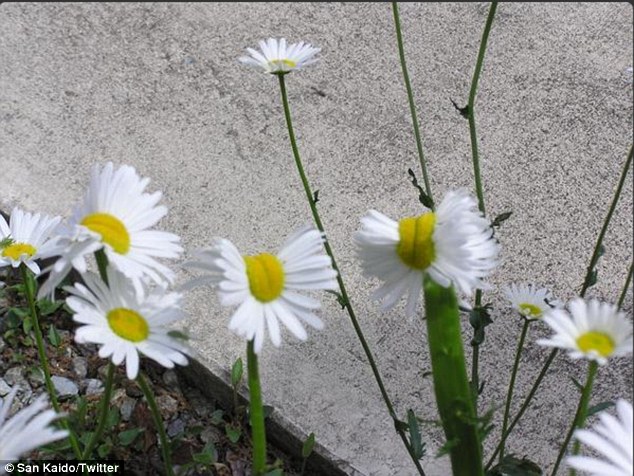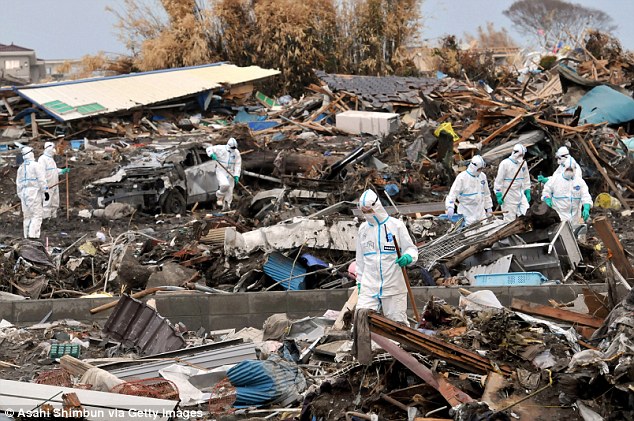Plants mutated genes because of radiation near Fukushima
Four years ago, the disaster of Fukushima nuclear power plant in Japan caused serious consequences. But so far, the remaining radioactive substances around this area may continue to cause a new disaster, genetic mutations.
Chrysanthemum mutated because of radiation near Fukushima
It is not a story that we have seen on a good movie in comics, but it actually happened in the areas around the Fukushima nuclear power plant. Radioactive remnants after the disaster four years ago caused the plants here to be genetically modified.
And the sign of this transformation is now clearly visible. A member of Twitter has posted a number of photos of strange deformed daisies, in Nasushiobara city .
 The daisies are mutated.
The daisies are mutated.
Scientists call this mutation the fasciation , which causes hormonal imbalances in plant types. This is a rare mutation that causes plants to abnormally increase the number of cells.
Therefore, these mutant flowers have been developed since the beginning of the year. There are two calyxs and they are like two flowers sticking together. As they grow larger, they begin to look quite strange.
Known as fasciation (or cresting) hormonal imbalance in vascular plants is a rare disease that causes plants to increase weight and volume.

Strange shape, like two flowers sticking together.
According to scientists, this mutation does not appear only in areas of radioactive contamination , but it is a rare mutation that can be seen elsewhere. However, the mutation of flowers near the radioactive area also worried many scientists.
The area around the Fukushima nuclear power plant has been evacuated after the 2011 disaster. At present, radioactive treatment steps are still underway before people can return to live normally.

The processing of radioactive substances in Fukushima is still ongoing.
According to the record, in addition to the case of mutations in this chrysanthemum species, no other mutations have been detected. We know that radioactive substances have a huge effect on cells and can cause genetic mutations. However, most cases of severe radiation cannot survive for a long time.
However, some cases of radioactive material accumulate inside without any effect, only when the concentration is too much to allow or radioactive substances decay will begin to affect the cells. cells in the body.

4 years after the Fukushima disaster, the surrounding area is still in isolation and no one lives.
In addition to Fukushima, the Chernobyl disaster is known as the most catastrophic nuclear disaster in history. At present, there are 160 tons of radioactive substances in the city, but many animals have returned to live here.
And there have been no reports of detection of mutant animals in this area. The strangest thing is that after the explosion at Chernobyl at the nuclear plant, most species could not survive. Except for one animal that is catfish, this fish can live in a deadly radioactive environment that scientists still don't understand.
- Exotic plants after the Fukushima disaster
- Radiation from Fukushima is only 10% of the Chernobyl case
- Fukushima workers died not because of radiation
- Tokyo has a higher radiation exposure point in Fukushima
- Products from Fukushima no longer trace radiation
- Fukushima radiation spreads to the US coast
- Very high radiation index at Fukushima
- Japan seeks to reduce radiation levels in Fukushima
- Fukushima children are exposed to radiation below the danger threshold
- Researching organisms around Fukushima I power plant
- Record high radiation at Japanese nuclear power plant
- Accumulated contamination of Fukushima workers is still high
 Why do potatoes have eyes?
Why do potatoes have eyes? 'Tragedy' the world's largest carnivorous life: Death becomes ... public toilet
'Tragedy' the world's largest carnivorous life: Death becomes ... public toilet Tomatoes were once considered 'poisonous' for 200 years
Tomatoes were once considered 'poisonous' for 200 years Detecting microscopic parasites on human face
Detecting microscopic parasites on human face